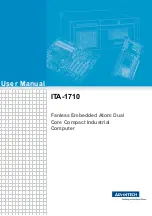
DP2402
Pulse stretcher
8
4 Function
The device supports two different output behaviours:
1. It can output an input pulse stretched, shortened or delayed at the output.
2. The edge of the input signal can serve as a trigger to initiate a pulse at the output. The pulse
duration is set via a parameter.
For parameter setting and diagnostic purposes there is an IO-Link interface available. The following
options are available:
•
Remote parameter setting: reading and changing the current parameter setting
•
IO-Link parameter setting: IO Device Description (IODD) (
For diagnostic purposes, the input states and output states are available via the process data.
Due to the cycle time, the correctness of the process date displayed via IO-Link cannot be
guaranteed.
4.1 Application as an IO-Link device
4.1.1 General information
The unit has an IO-Link communication interface which requires an IO-Link capable module (IO-Link
master).
The IO-Link interface allows direct access to the process and diagnostic data and enables setting of
the parameters of the unit during operation.
You will find further information about IO-Link and all the necessary information about the required IO-
Link hardware and software at:
4.1.2 Application
The use of the IO-Link interface in the application is not intended. It is mainly used for convenient
setting of the device.
4.1.3 IO Device Description (IODD)
You will find the IODDs necessary for the configuration of the IO-Link device and detailed information
about process data structure, diagnostic information and parameter addresses at:
4.2 Function diagrams
The output is defined as a normally open (no) or normally closed (nc) via the parameter [ou1] or [ou2].
4.2.1 Input configuration: pulse-controlled
The application of the switch-on and switch-off delay makes it possible to output input pulses
stretched, shortened or delayed at the output. The duration of the output pulse depends on the pulse
duration at the input.









































